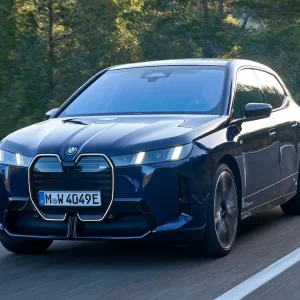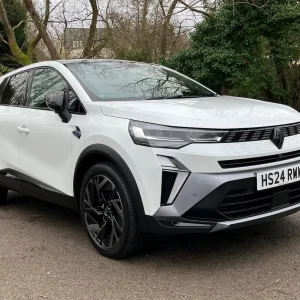On paper, the new Toyota Prius hybrid is peerless as a business car. Emissions of just 70g/km, on the 15-inch wheels at least, mean it’s untouchable among non-plug-in models.
Only its own Yaris hybrid sibling, a supermini rather than the larger upper medium car the Prius professes to be (even if it’s no bigger than many lower medium hatchbacks), can get under the 76g/km emissions figure crucial for those worried about their BIK payments, London congestion charge or capital allowance write-downs.
It’s a significant achievement, which takes on even more significance when Toyota points out that the 21% emissions improvement from the third-generation Prius to the fourth is the biggest percentage drop between any two new models, with figures going from the first car’s 120g/km to 104g/km and 89g/km on the way to the level of the new model.
Improvements aren’t just limited to the efficiency, with big changes to the interior, engineering and design. The interior quality is improved, although it’s not quite as high-class on closer inspection as it looks at first glance, while the touchscreen system is impressively responsive. There is a lot going on in terms of cabin displays, with three different screens plus a head-up display on all bar the entry-level model.
Toyota has revised the driving position, lowering the hip point by 59mm and changing the steering wheel angle, as well as narrower A-pillars, for the company claims, a 4cm improvement in forward visibility. It also claims to have improved the seats with more lateral and back support, but the seat cushions in particular could be more comfortable.
The styling is something of a difficult question. The more angular and creased design is certainly striking, and in side profile is fine, while the back is better in darker colours. But the front is too fussy, like three designers all insisted on their ideas being incorporated. It’s certainly not elegant, but will ensure the car gets noticed.
Toyota claims changes to the way the vehicle drives have improved responsiveness and refinement, while the car will now coast on hybrid mode at up to 68mph for improved higher-speed efficiency, something hybrids have been criticised for in the past. Despite the petrol-electric system offering reduced power versus its predecessor – now at 122hp against 136hp – the company’s claims that the engine is more responsive would appear to feel correct.
But the CVT transmission still gives a dissatisfying whirr and the volume increase isn’t completely matched by forward motion under acceleration. Also, the brakes take some adjusting to, as to work with the hybrid regeneration system it’s best to brake earlier and softer, and pushing harder and later leads to a snatching effect. However, the ride quality is improved, and the heavier steering is less artificial in feel than the previous Prius.
It’s certainly not as rewarding to drive as conventional diesels, although in urban settings the battery-only running is therapeutically soothing, and efforts to increase the regeneration do seem to make it harder to drain the battery than previously, facilitating more electric motoring.
But the generously equipped Prius is all about the costs. An RV of nearly 40% helps those phenomenal costs figures on the 15-inch wheels that are standard on the lower trims and optional at minus £400 compared with the standard 17-inchers on pricier versions that take emissions up to 76g/km – crucially one gramme too high for the BIK, NI, congestion charge and writing-down allowance benefits. The BIK alone is half that of a Ford Mondeo, but despite Toyota’s protestations, the Prius is sized more in line with lower medium models, even if it is priced directly at upper medium models.
That means the likes of a Skoda Octavia would be cheaper for companies to run thanks to a huge P11D advantage. But for fleets looking to minimise running costs with an upper medium model, especially if they are spending plenty of time in urban or heavy traffic, the Prius is a very intelligent choice.
Toyota Prius 1.8 Excel |
| Model price range £23,295-£27,450 |
| Residual value 39.9% |
| Depreciation £1872 |
| Fuel £3250 |
| Service, maintenance and repair £1872 |
| Vehicle Excise Duty £0 |
| National Insurance £1701 |
| Cost per mile 49.9p |
| Fuel consumption 85.6mpg |
| CO2 (BIK band) 76g/km (13%) |
| BIK 20/40% per month £59/£119* |
| Warranty 5yrs/100,000mls |
| Boot space (min/max) 502/1054 litres |
| Engine size/power 1798cc/122hp |





